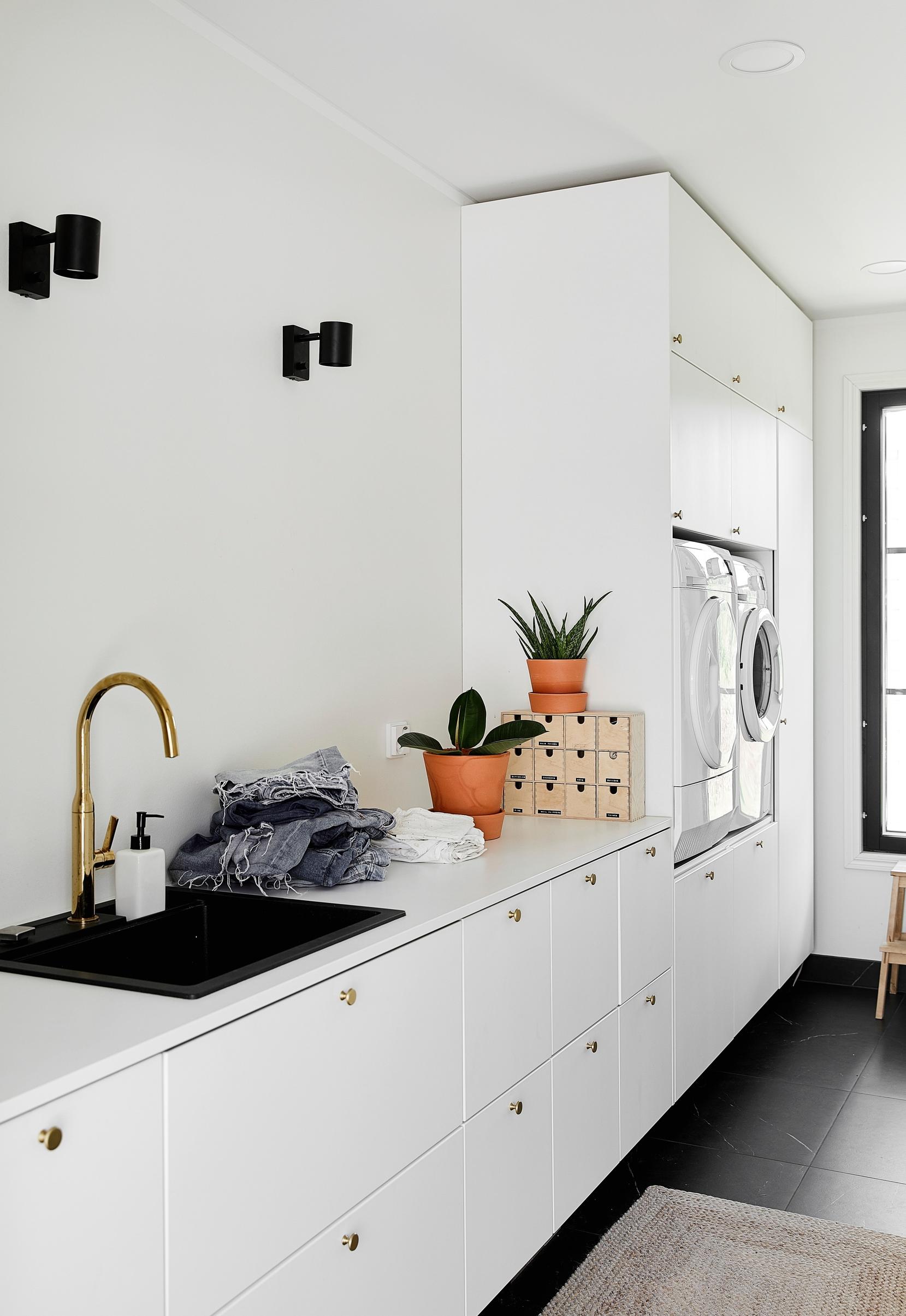
Laundry room design–see our tips for creating a functional space
It’s a good idea to plan your laundry room carefully. You can fit all the essential functions in a well-designed space. Finding a solution that complements your home’s style and décor is another point to consider.
The laundry room is no longer considered separate from the rest of your décor—it can blend seamlessly with your home's overall style.
“We choose storage cabinetry for the entire home at once, using the same colors, materials, and furniture in the kitchen, bathroom, and laundry area. Instead of open shelving, people prefer drawers and cabinets with doors. The idea is to keep everything behind closed doors and focus more on ergonomics,” says designer Senni Terävä.
Clients also want a spa-like atmosphere—familiar from bathrooms—even if the room is small. High-quality materials are increasingly important. People are increasingly willing to make bold, personalized choices.
“Most often, the laundry area is in the bathroom, meaning both bathing and garment care happen in the same space. Good design is vital when you want to fit a sink, storage, and laundry facilities into the same square footage in a stylish way,” adds Senni Terävä.
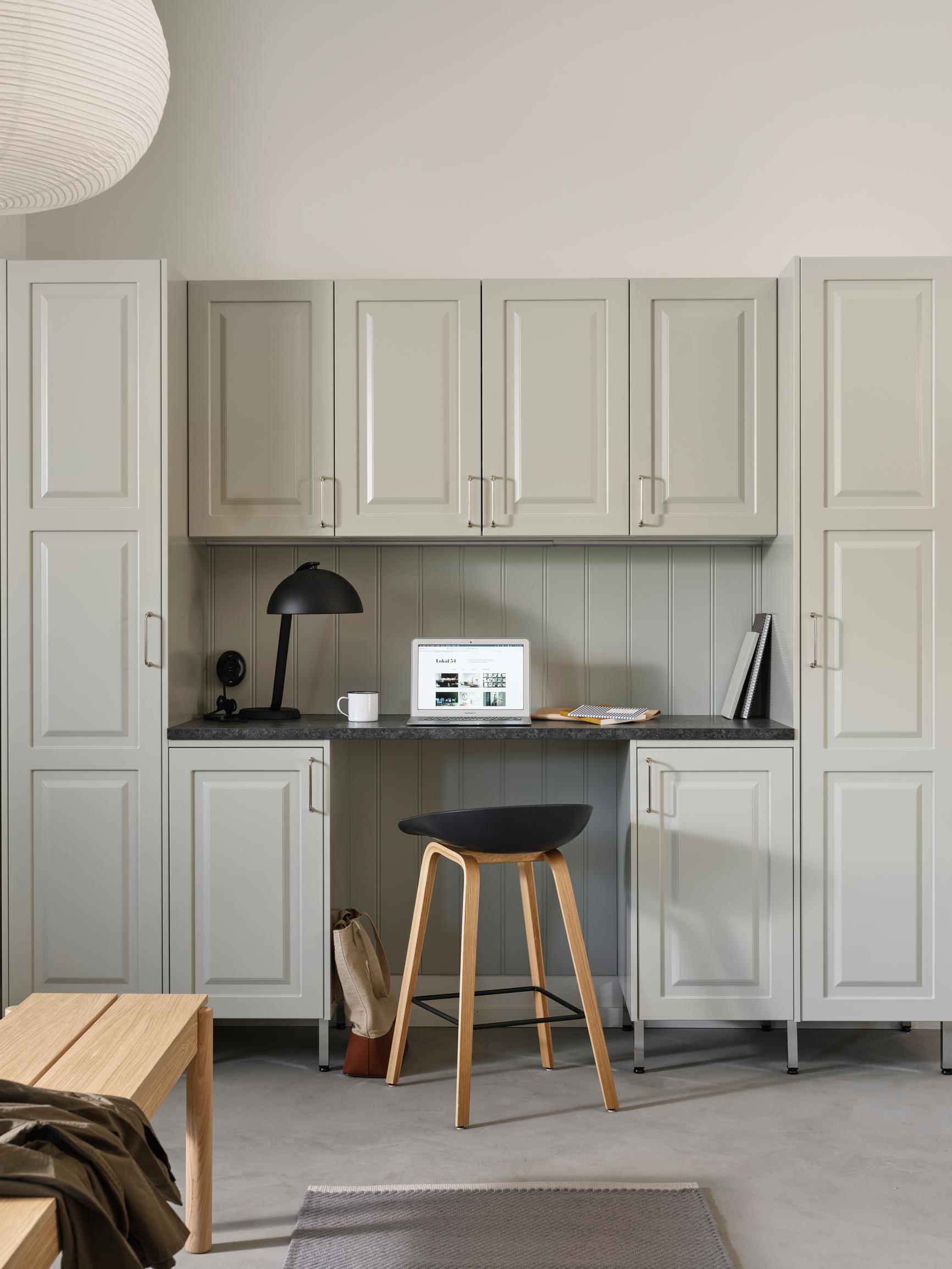
A washer-dryer saves the space a separate dryer or drying rack would occupy.
6 tips for designing a functional laundry room
1. Make use of the entire space
You can never have too much storage in a laundry room. In addition to handling laundry, it’s wise to reserve space for cleaning supplies, seasonal items, and hobby equipment. In small spaces it’s a good idea to use the full height of the room. Versatile storage solutions are particularly important if you also use the laundry room as a mudroom or for outerwear storage.
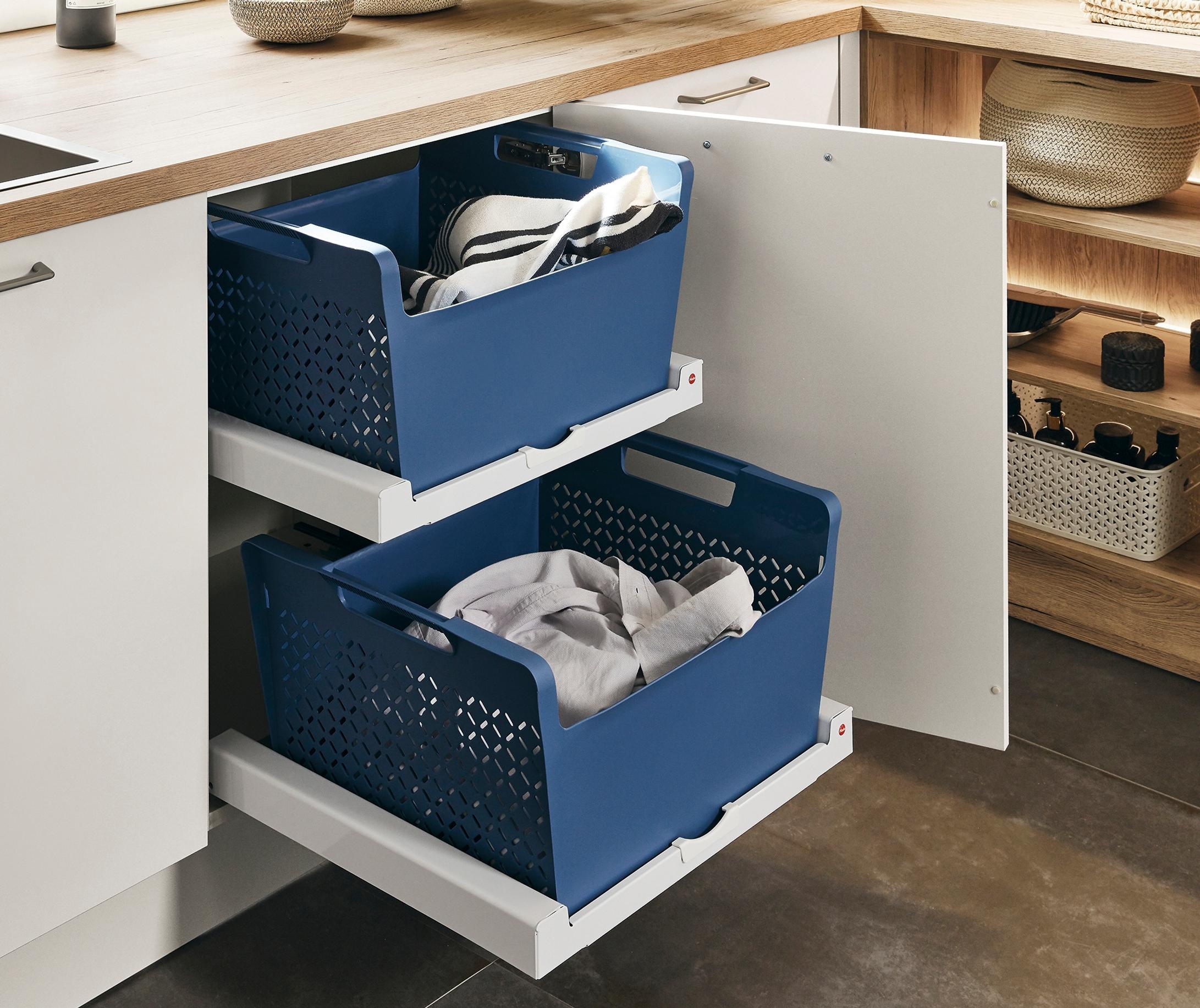
2. You need plenty of work surface
Set aside a generous work surface in the area dedicated to laundry and clothing care, giving you enough room to handle garments. Placing a washer and dryer on top of a drawer unit saves your back and leaves a convenient spot underneath for dirty laundry or detergents.
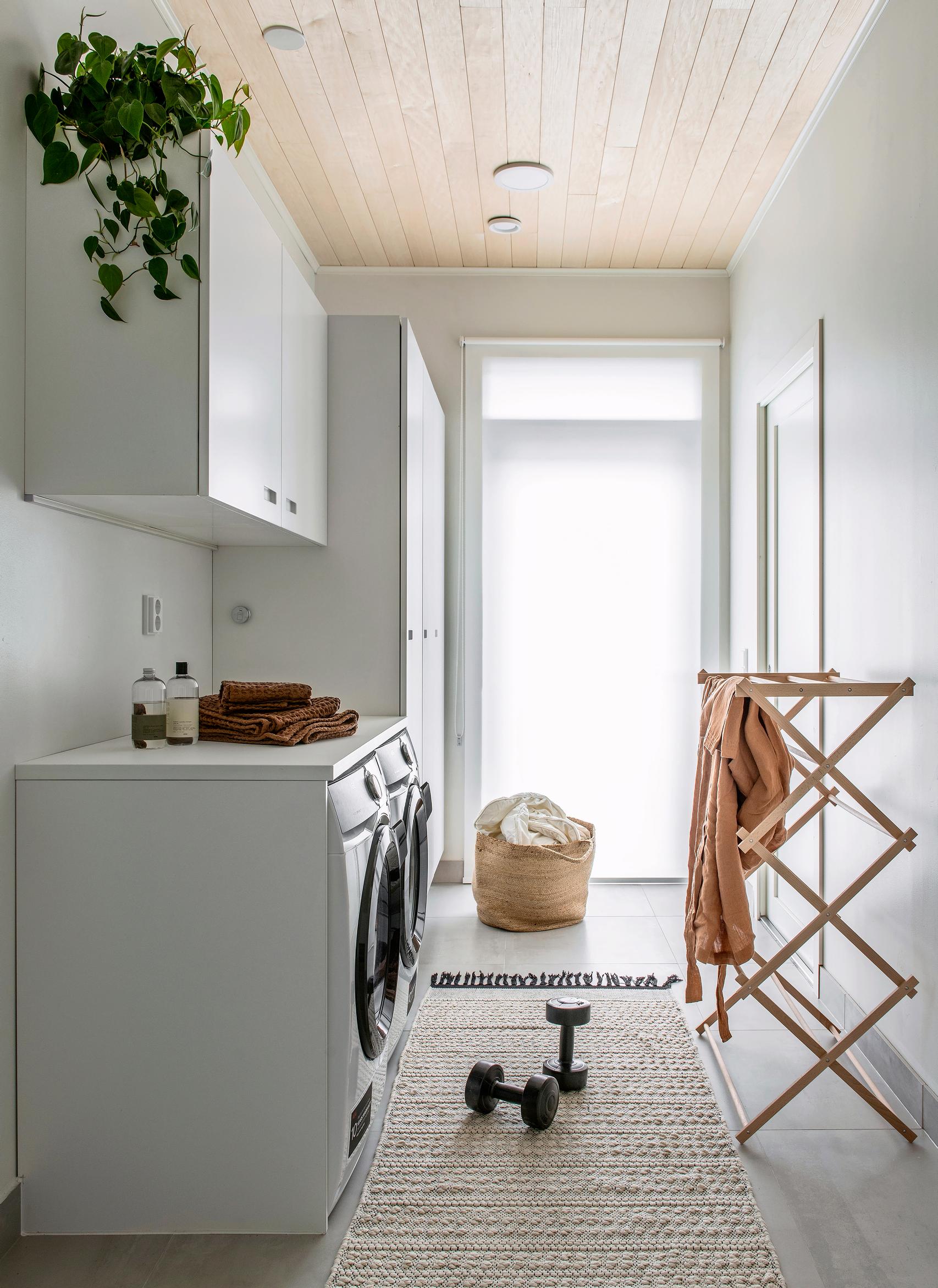
3. Position your appliances wisely
Placing your machines side by side provides a handy surface for folding laundry on top. A stacked washer-dryer arrangement, on the other hand, takes up less space, especially in a small laundry room.
4. Leave room for working
Don’t crowd the laundry room. You need about 1.5 meters of free workspace in front of appliances and cabinets. A standard washer and dryer require cabinets with a depth of 60 centimeters, but other cabinets can work well with narrower depths.
5. Keep things bright and comfortable
If possible, arrange your workspace—perhaps for sewing—by a window. A good height for a work surface is about 65–70 centimeters. Meanwhile, a pull-out ironing board is best at around 85–90 centimeters.
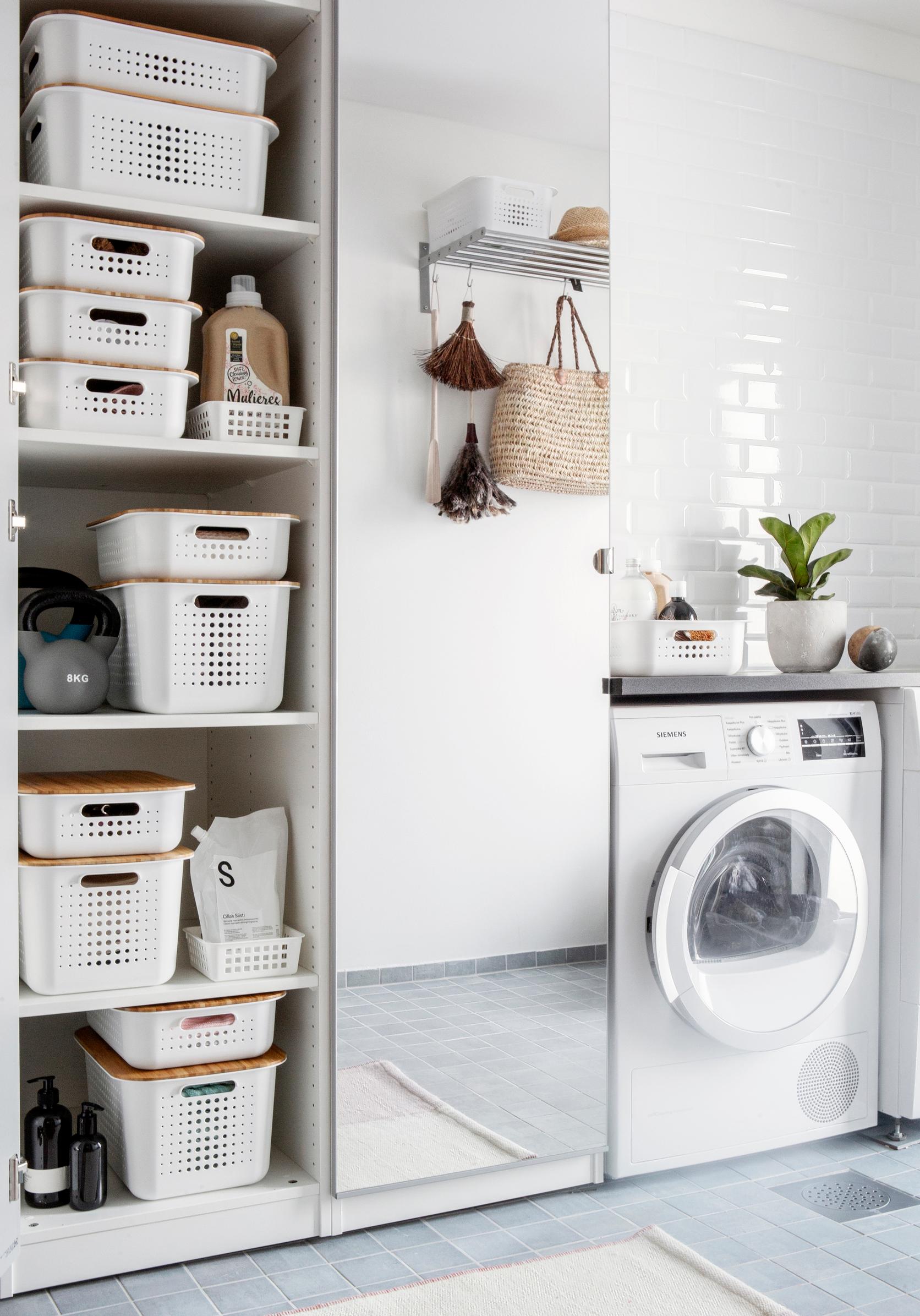
6. Make washing easy
Choose a large enough sink and a tall faucet for your laundry room. That way, it’s easy to fill a bucket or wash bigger items.
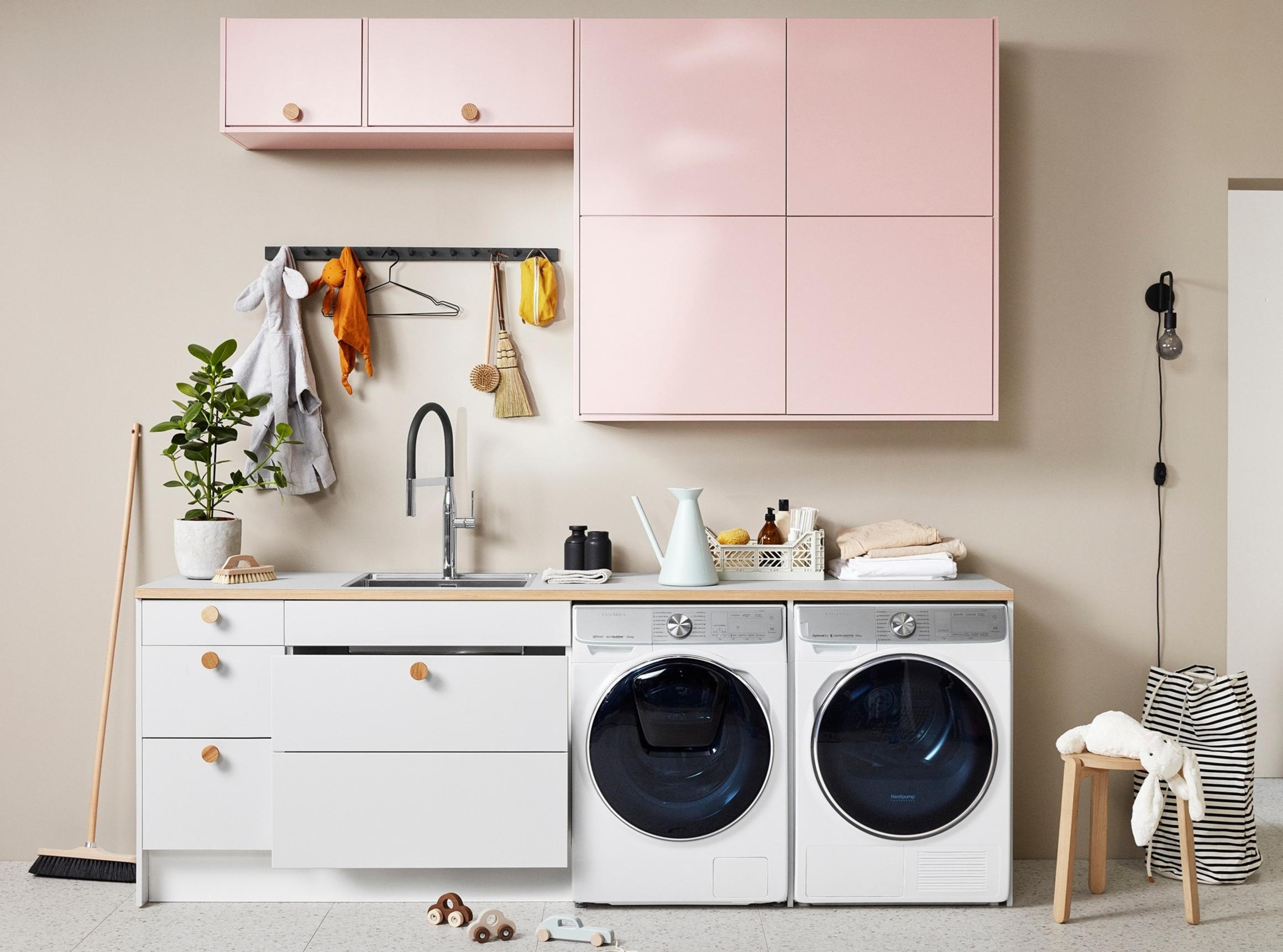
What’s the best place to store cleaning supplies?
Instead of hiding them, keep cleaning supplies where you use them most. By blending your storage solution into the décor, cleaning tools won’t be an eyesore. Buy a vintage wardrobe from an auction or antique store, and turn it into a cleaning closet with the right accessories. You’re more likely to grab the vacuum if it’s easy to take out and put back. In many homes, the area under the stairs is either unused or becomes cluttered storage. It’s surprisingly easy to convert it into a handy cleaning closet with doors or a curtain.
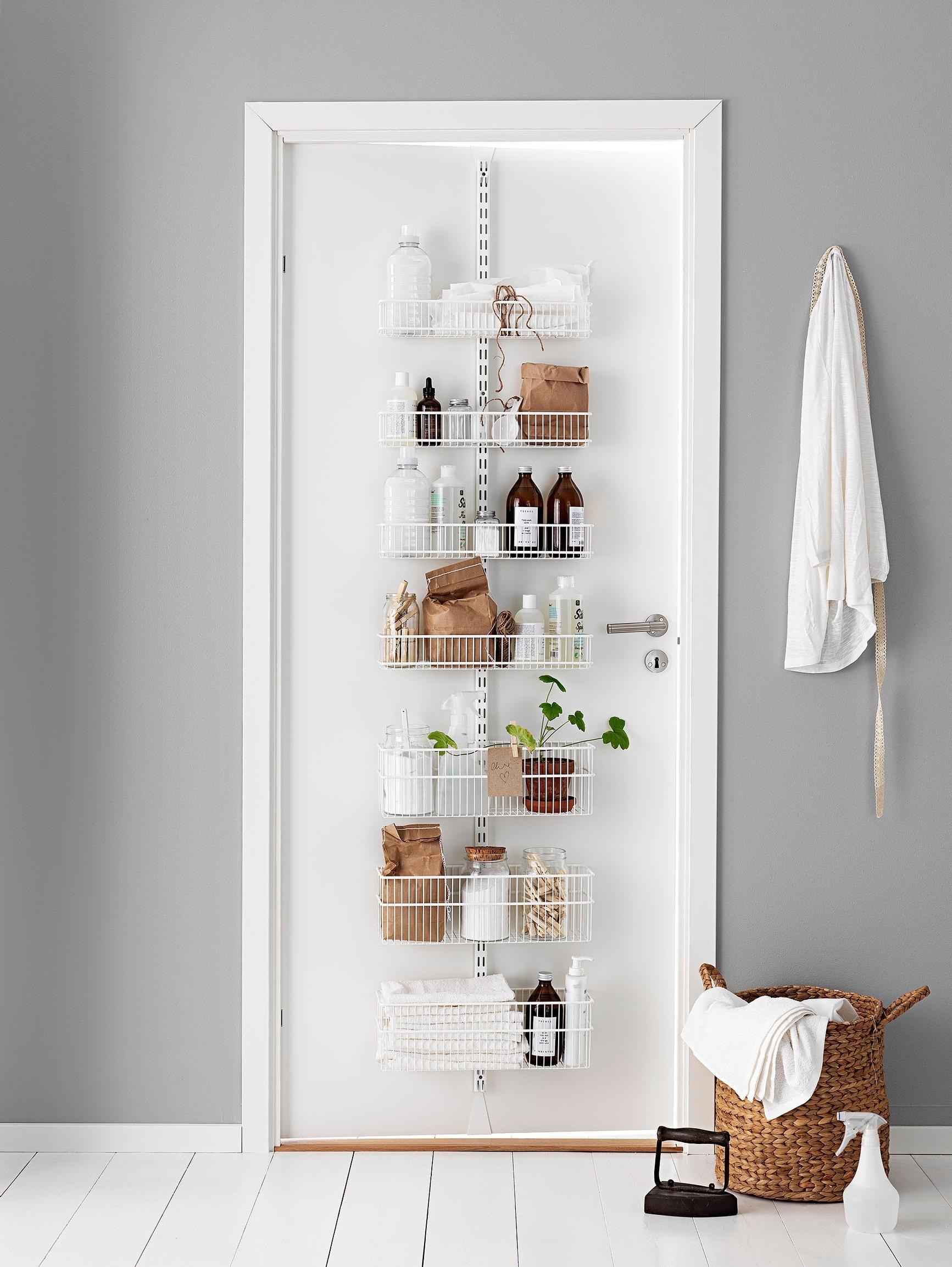
Don’t do laundry unnecessarily. Airing out a shirt you’ve worn for the day can freshen it right up.
What’s a good spot for drying linens?
When the weather allows, it’s a good idea to dry your sheets outdoors in the fresh air. Nowadays, folding drying racks come in many styles and sizes for balconies both big and small. Even a door can serve as a drying spot if you mount a rack on top. A door-mounted rack for sheets and towels saves floor space and frees up the drying rack for other laundry. A retractable clothesline you can pull inside when not in use is another convenient option.
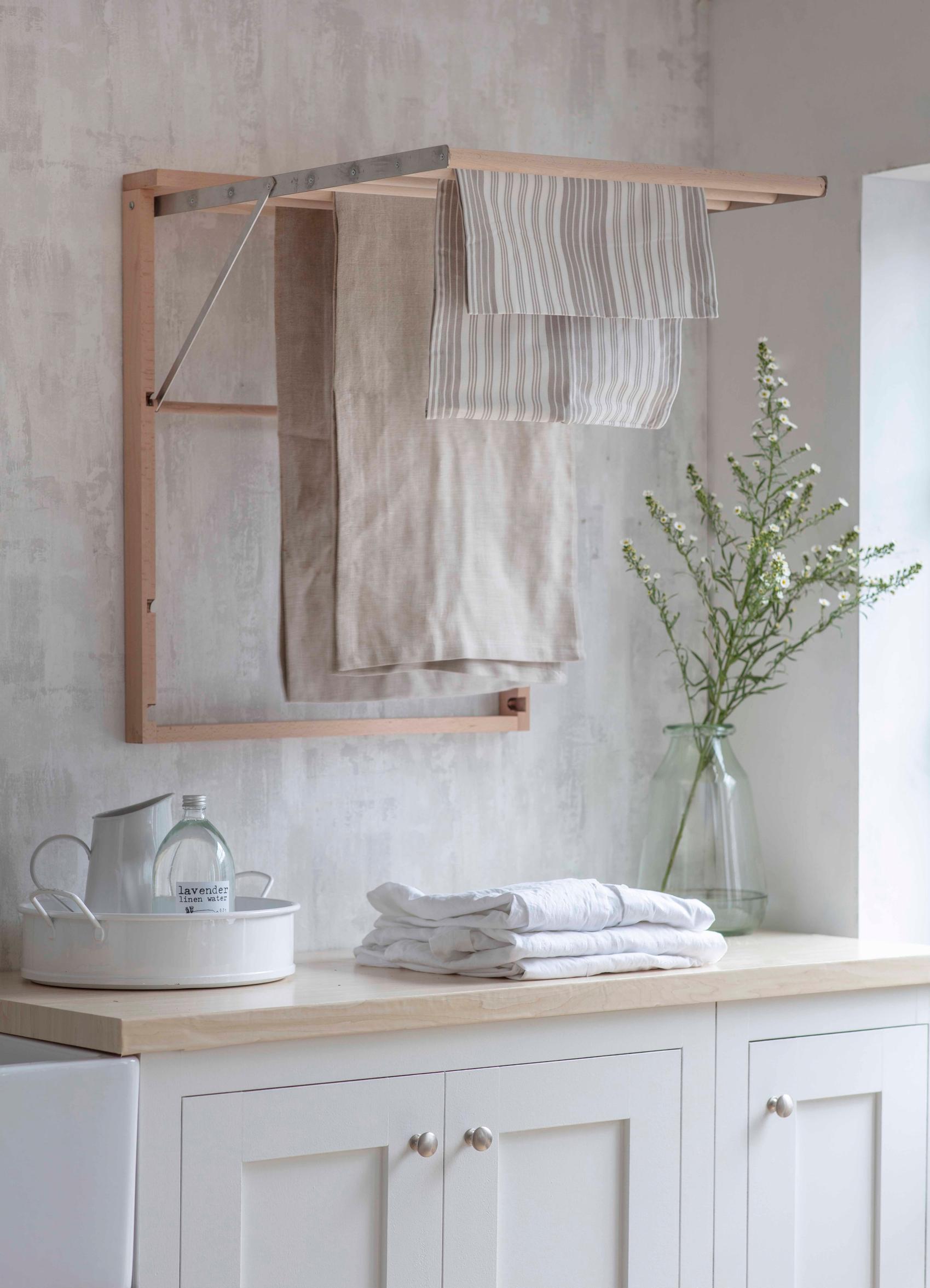
Where can I store clothes that need ironing?
Attach hooks to the wall or hang a rod above a counter. There, you can add plenty of hangers for clothes waiting to be ironed. You can also fold sheets and bedding onto hangers. Gain more storage by hanging baskets on hooks. Drying clothes on hangers also cuts down on ironing.
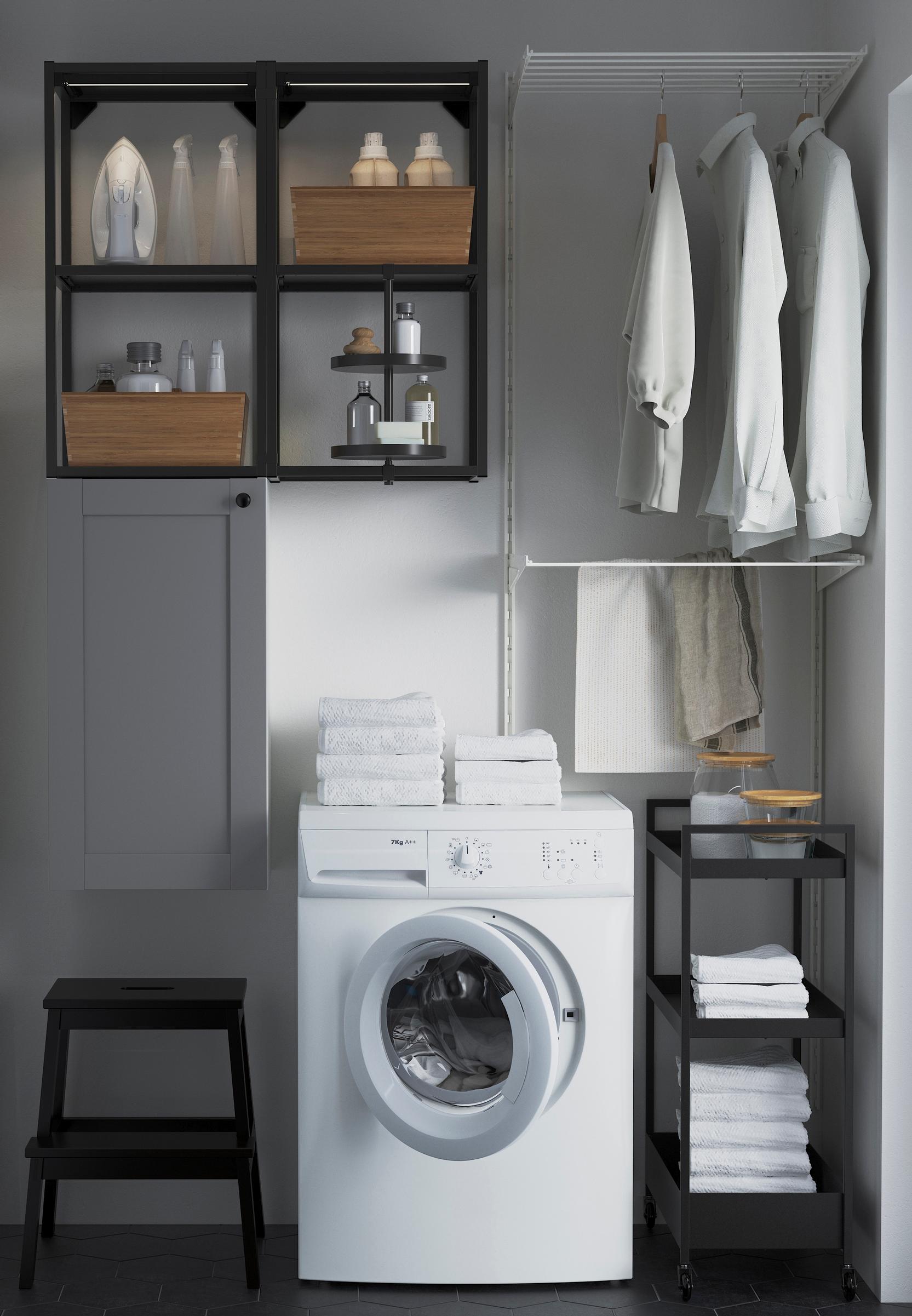
If your laundry area is part of the bathroom, opt for unified cabinetry.
How to arrange laundry care in small spaces
- Everyday life is easier when laundry sorting is simple for everyone. If you don’t have room for a dedicated laundry cabinet, opt for stylish, clearly labeled hampers or wall-mounted bags for whites and colors at minimum.
- Create more surface space with pull-out shelves or a sorting shelf. You can install it above the washing machine or, in a stacked setup, between the machines. A shelf in between makes loading and unloading the dryer easier.
- If space for drying laundry is limited, you might find the solution overhead. A ceiling-mounted drying rack doesn’t take up floor or wall space and is easy to raise out of the way. You can also use a garment rack as a drying rod.
- It’s often hard to find a perfect spot for the ironing board. A pull-out ironing board is a practical, efficient solution. If it matches your décor, feel free to leave it visible. You can re-cover it with your favorite fabric or pick a stylish model. Brabantia, for example, has many appealing options.


